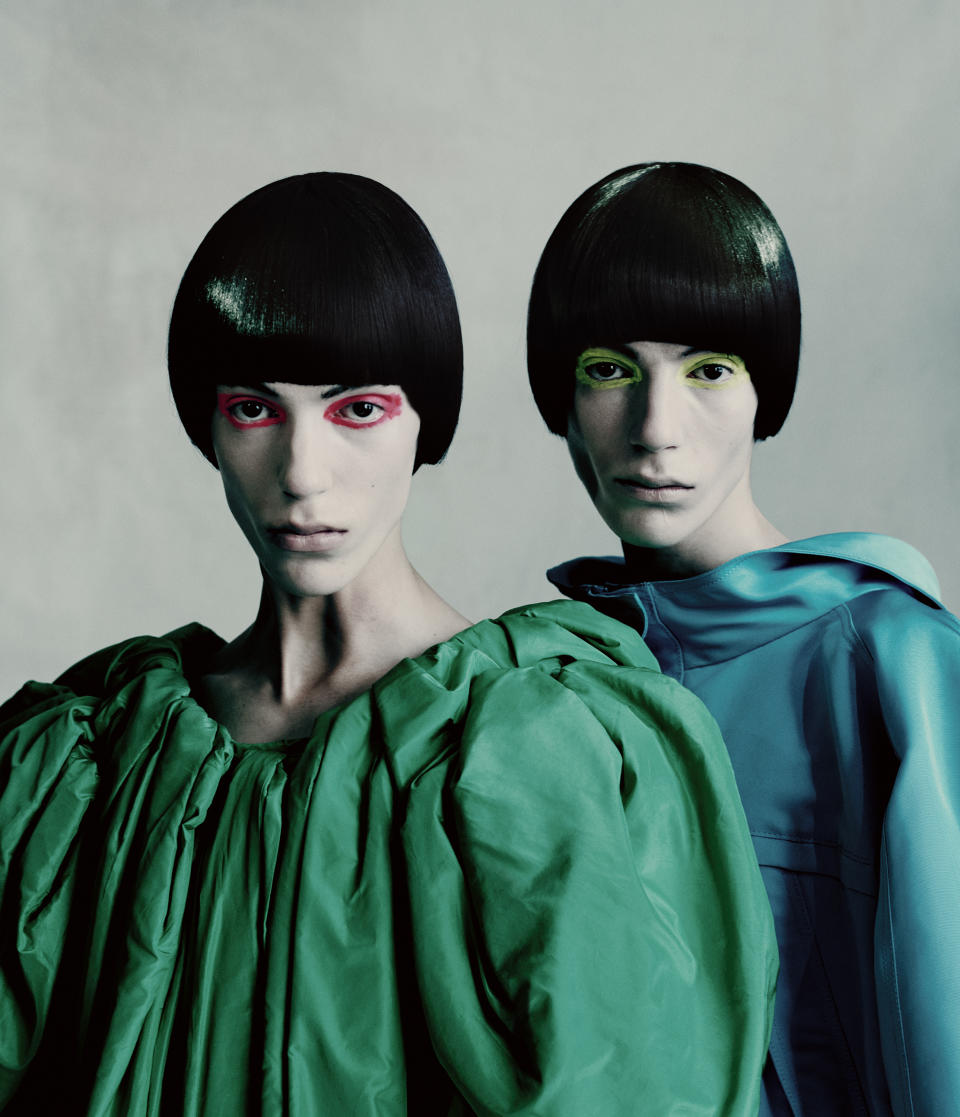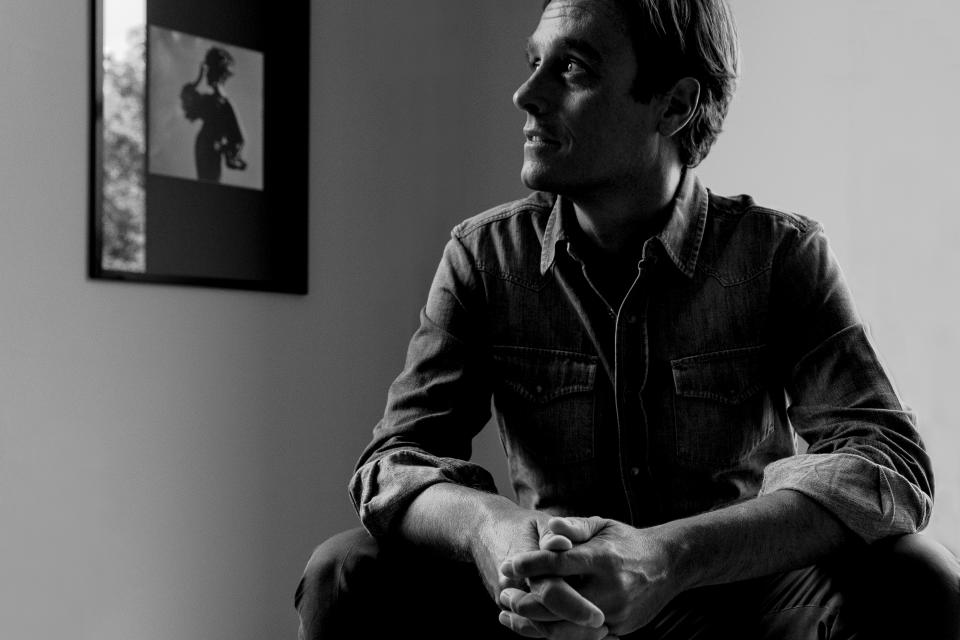Former Vogue Italia Editor in Chief Emanuele Farneti on His New Weekly Bet

MILAN — “The quality of a monthly publication, the frequency of a weekly. The intelligence of the written word and the strength of the image. A renewed digital offer…and the authority of a proudly printed product. This is the recipe of the new ‘d’,” writes Emanuele Farneti in the editor’s letter marking the new course of D, the weekly supplement of Italy’s progressive newspaper La Repubblica.
The Condé Nast veteran revealed ambitious plans for the 26-year-old magazine he is now helming after stepping down from his role as editor in chief of Vogue Italia and L’Uomo Vogue last year. The weekly publication is part of the rich portfolio of the GEDI Gruppo Editoriale media group, whose majority stake is owned by John Elkann’s Exor holding company.
More from WWD
“I want this to become the most authoritative fashion and beauty magazine in Italy as well as the most relevant Italian fashion publication abroad. And honestly, if we work well, there’s the space to achieve this goal,” Farneti said in an interview with WWD ahead of the relaunch.
Hitting newsstands on March 19, the new issue telegraphs the high-end standards and internationally appealing approach Farneti aims to bring to the magazine by centering it on respectability, consistency and sophistication. Case in point: Carlijn Jacobs and Paolo Roversi have been tapped to photograph the first two covers, which resonate with the current geopolitical and social context.
Titled “Give peace a chance,” Jacobs’ cover portrays model and activist Anja Rubik posing with a white dove on her hand, while Roversi’s shoot featuring a nonbinary cast clearly spells that “fashion is politics.”
“Fashion can’t be anything but political because it is a universal language. It is an art (minor, of course) that has a strong voice, an infinite audience, the media and economic capacity to mold the public opinion as much and — according to some studies — even more than governments,” Farneti notes in his letter. “It communicates a lot, certainly not everything carries a meaning, but if it does, it contributes in a significant way to move our society a few steps forward.”
The editor further explains that, even if “when we started working on this issue, the bombs on Kyiv weren’t even imaginable,” the purpose of the magazine was to narrate fashion and pop culture intertwined with reality and current events, treating different themes on its pages, such as inclusivity, social justice, civil rights, gender equality and sustainability, among others.

Paolo Roversi/Courtesy of D
To sustain this editorial approach and compete on a global scale with other newspaper supplements, Farneti enlisted an international team of contributors adding to the existing core staff and including industry veterans such as Jacob K, tapped as creative director at large, as well as Piergiorgio Del Moro and Samuel Ellis Scheinman, who have been named creative consultants.
In addition, Thomas Persson was tasked with the creative direction and the key challenge of redesigning the magazine.
Holding a fashion journalism MA from Central Saint Martins MA, Persson has helped fashion and beauty companies enhance their visual communication and brand building projects. He was appointed creative director of L’Uomo Vogue in 2018 but is mostly known for his work at Acne Paper, where he was both editor in chief and creative director from the project’s inception in 2004 until its closure in 2014. In 2021 he resumed his position for the relaunch of the magazine.
“I shared with Thomas a couple of years at L’Uomo Vogue, and I have always been a huge fan of his work at Acne Paper before and now,” Farneti said. “In addition to having great taste and sense of style, he has the characteristic of being an [editor in chief] before an art director, therefore he understands the journalistic sense of an editorial project, beside having a special touch from the visual point of view.”
For D, Persson set out to create a more impactful visual identity, including a bigger size “which enables us to have an even stronger effect on photography, one of D’s key assets since the beginning,” Farneti said.
Persson also tweaked the logo, switching it from the capital D to the lowercase version of the letter, as well as moving it from the top left to the top right of the cover.
“Beyond marking a strong discontinuity, the sense of switching from uppercase to lowercase is to telegraph the feeling of a newspaper that doesn’t need to scream to be heard,” said Farneti, underscoring the difference between boldness and loudness that seems to be lost to some media nowadays.
Paying tribute to the publication’s heritage, the font selected for the magazine is the quintessential Italian typeface Bodoni, rendered in the version designed for La Repubblica and dubbed Eugenio, after the name of the paper’s founder Eugenio Scalfari.
While typography is a recurring element throughout the entire layout, with letters and punctuation occasionally zoomed and blown up to create graphic elements on the pages, the overall design results in a versatile visual identity aimed at saving time and optimizing budgets.
“Less but better: this is the fil rouge of this project, not only in terms of budgets and efficiency but out of respect for the time and attention of our readers. This has to be the best read for the weekend — intelligent and enjoyable. In 2022, you can’t think of giving the reader a product that is too dense and full of boxes, because no one has the time to follow that level of detail,” Farneti noted.
In this perspective, according to the editor, the role of a print magazine is “to select and make the effort for the reader, this is what still has a lot of value. For example, we will not recommend five books of the week but just one, and if we will get it wrong, it will mean we haven’t done our job well. The more you select and edit, the more difficult it gets and more responsibility you take.”

Federica Fioravanti/Courtesy Image
Born in 1974, Farneti started his career in the TV business and joined Condé Nast in 1999 as part of the team that launched the Italian version of GQ. After serving at other Italian publications — including La Gazzetta dello Sport, men’s magazines Sportweek, Men’s Health, Flair and Icon, which he launched — he returned to Condé Nast in 2014 as editor in chief of AD. In December 2015, he was named editor in chief of GQ and then of Vogue Italia in 2017, succeeding Franca Sozzani in the role.
The new venture is proving to be gratifying for him for the variety of topics that the magazine can treat across 50 issues, offering him a platform to pour all his different experiences encompassing fashion, art, interior and sports. “I see it just as the synthesis of all my previous work, which have not been vertical on fashion,” he said.
So far, his ambitious plans were received favorably both inside the company and outside, garnering both attention and expectations. “I believe that I am recognized for being reliable…plus the idea of creating a platform of this quality in Italy is in everyone’s interest, because there aren’t many nowadays,” he noted. “In the round of meetings we held to present the project, we’ve been told that the most interesting editorial products on the market at the moment are the supplements of the major international newspapers, which has been very comforting because it shows us that there is an interesting space [for us],” concluded Farneti.
While the editor might have subtly hinted to print competitors shutting down, restructuring teams or changing their frequency, there’s little doubt that this relaunch marks another step in Elkann’s growing attention toward the fashion industry. As reported, over the last 18 months, the Agnelli family holding invested in Chinese luxury brand Shang Xia to become the company’s majority shareholder alongside Hermès International and founder Jiang Qiong Er; took a stake in Christian Louboutin, and partnered with The World-Wide Investment Company Ltd., of the Hong Kong Pao family, to set up the Nuo SpA company focused on medium-sized Italian players specialized in consumer goods. The family also is aggressively expanding one of its iconic auto holdings, Ferrari, into the luxury arena, including fashion — most recently holding a runway show during Milan Fashion Week.
Sign up for WWD's Newsletter. For the latest news, follow us on Twitter, Facebook, and Instagram.

